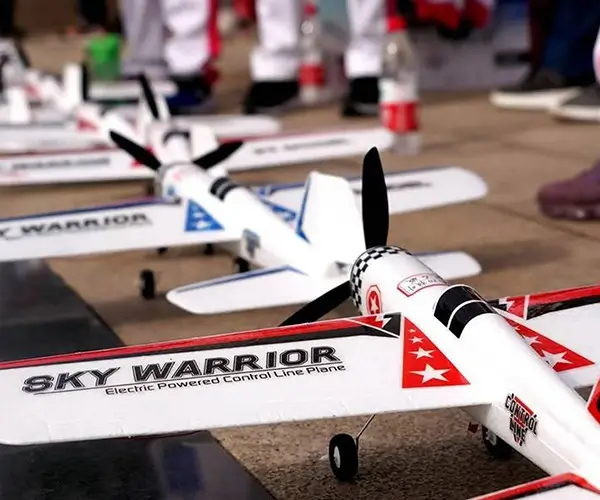Unlocking the Infinite: Mastering 360-Degree Servo Motors with Arduino
Imagine a tiny motor that doesn't just turn back and forth within a limited range but spins freely through a complete 360 degrees, allowing for limitless creativity. Enter the world of 360-degree servo motors—a game-changer in robotics, automation, and DIY projects. Whether you're aiming to develop a robotic arm, a camera gimbal, or a novel control system, understanding how to harness these motors with Arduino is an essential step toward turning your ideas into reality.

Why 360-Degree Servo Motors?
Most traditional servos operate within a restricted span, typically from 0 to 180 degrees. This limitation often confines inventors and hobbyists, especially in applications requiring continuous rotation—think wheels, conveyor belts, or rotating sensors. But 360-degree servo motors break free from that constraint, offering full rotation that allows for more fluid, natural motion and versatile control.
Unlike standard continuous rotation servos, which behave more like motors and less like precise positioners, 360-degree servos are designed to handle the complete range without losing their positional accuracy. They incorporate encoders and feedback mechanisms enabling precise control across the entire rotation, making them ideal for complex automation or innovative projects.
Anatomy of a 360-Degree Servo
Diving into the anatomy of these unique devices reveals several vital components. They incorporate a motor—either brushed or brushless—that, along with a sophisticated control board, manages the rotation. An internal potentiometer or encoder provides feedback, allowing the servo to know its position at any moment.
The technical distinction is crucial: standard servos interpret position commands once within their limited angle range. In contrast, 360-degree servos accept commands for continuous or full rotation, often through different control signals or internal adjustments. Some are true positional servos capable of precise angle control, whereas others function more like continuous rotation motors but with positional feedback for specific applications.
Arduino and 360-Degree Servo Control: The Basics
Building control systems that leverage 360-degree servos begins with the Arduino microcontroller—a versatile, beginner-friendly platform that comes complete with a vast open-source community. Connecting a servo motor to Arduino is simple: you connect the power (usually 5V), ground (GND), and signal (PWM control pin).
Most standard Arduino servo libraries target traditional servos, but for 360-degree servos, you often need to adapt or choose specialized libraries that handle the extended range and feedback control. The core principles remain: send PWM signals to set motor position or rotation speed, read encoder feedback if available, and implement control logic accordingly.
Getting Started: The Essential Hardware
To embark on your 360-degree servo journey, you'll need:
An Arduino board (Uno, Mega, Nano, etc.) A suitable 360-degree servo motor (check specifications for rotation range and feedback options) Power supply capable of providing adequate current (these motors can draw more during operation) Connecting wires, breadboard, or custom PCB for neat wiring Optional: external encoder or sensor for advanced feedback control
Setting Up Your First 360-Degree Servo
Once hardware components are in hand, setting up is straightforward:
Connect power and ground to the servo, ensuring your power source can supply the necessary current. Powering multiple servos from the Arduino’s 5V pin is not advised—use an external power supply. Connect the control signal pin to a PWM-capable digital output pin on the Arduino. If your servo or project involves feedback, connect the encoder or sensor accordingly.
Basic Arduino Code for a 360-Degree Servo
Here's a fundamental approach to control a 360-degree servo with Arduino:
#include Servo myServo; void setup() { myServo.attach(9); // Control pin connected to digital pin 9 } void loop() { // Rotate to 0 degrees myServo.write(0); delay(1000); // Rotate to 180 degrees myServo.write(180); delay(1000); // Rotate to 360 degrees (or back to 0, depending on servo limits) myServo.write(0); // Some servos interpret 360 as 0 or full rotation delay(1000); }
Note: Not all 360-degree servos interpret write() commands straightforwardly—some may require specific configuration or modified libraries to manage continuous rotation or full-range motion properly.
Challenges and Considerations
Controlling 360-degree servos isn't always as straightforward as standard servos. Some models may need special handling for their full rotation capabilities, including:
Servo Calibration: Verifying the correct range and limiting the motor's rotation to prevent damage. Power Management: These motors often require more current than standard servos; ensure your power supply can handle the load. Feedback Integration: For precise control or complex movements, integrating encoders or sensors is crucial.
Exploring Further: From DIY to Advanced Robotics
Once you’ve mastered basic operations, the possibilities expand exponentially. You can develop interactive robotic arms that mimic human motion, create panoramic cameras that rotate smoothly for professional photography, or even design intricate art installations with dynamic, full-rotation elements.
A particularly exciting avenue is implementing closed-loop control systems: combine the servo's internal feedback with external sensors to achieve precise positioning, stabilization, or even autonomous navigation.
Stay tuned for Part 2, where we’ll dive deeper into coding techniques for seamless control, advanced features like feedback integration, troubleshooting tips, and inspiring project ideas that leverage the full potential of 360-degree servo motors with Arduino.
Leveraging innovations in modular drive technology, Kpower integrates high-performance motors, precision reducers, and multi-protocol control systems to provide efficient and customized smart drive system solutions.




































